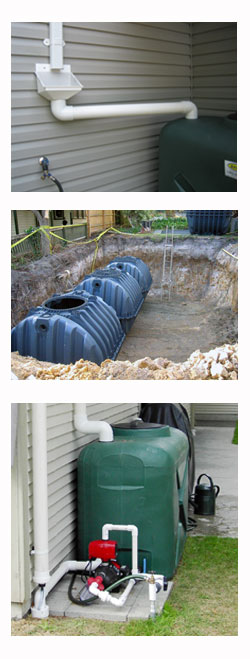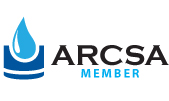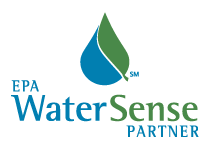
Irrigate with free water that falls from the sky!City of Abbotsford collects over 868,000 litres of water every year with these tanks. This water is then used for Parks and Works watering. |
 The Art of Rainwater Harvesting
The Art of Rainwater Harvesting
Much has changed in the last century — cities have sprung up, wells have been dug, lakes built and municipal water supplies established. Over the same time, springs have reduced their flow or dried up, rivers are more polluted and the base flow has decreased. Due to population growth and urban sprawl, our continent is now dominated by houses, streets and impervious cover. This increases storm water runoff and decreases water infiltration into the ground where it falls. All of this has a direct impact on the water quantity and quality issues we face. Today, there is renewed interest in rainwater harvesting — a time-honoured source of water — primarily due to:
- Concern about having access to high quality water, both now and in the future
- The rising environmental and economic costs of providing water through centralized water systems or well drilling
- The cost of water... see this table for a survey of metered water rates around the Lower Mainland
- Health concerns linked to the sources and treatments of water
- The cost efficiencies associated with rainwater harvesting
- Rainwater’s purity
 Captured rainwater can be used for both potable (drinkable) and non-potable purposes, both inside and outside a home or business. Outdoor uses include watering landscaping and gardens, and to provide water for pets, wildlife and livestock. Indoor uses include toilet flushing and clothes washing. Rainwater is often a forgotten resource for these uses, and can significantly reduce the amount of treated drinking water needed to complete these tasks. Additionally, the process of designing and installing a rainwater collection system is often less expensive than drilling a well.
Captured rainwater can be used for both potable (drinkable) and non-potable purposes, both inside and outside a home or business. Outdoor uses include watering landscaping and gardens, and to provide water for pets, wildlife and livestock. Indoor uses include toilet flushing and clothes washing. Rainwater is often a forgotten resource for these uses, and can significantly reduce the amount of treated drinking water needed to complete these tasks. Additionally, the process of designing and installing a rainwater collection system is often less expensive than drilling a well.
Reducing Storm Water Runoff
Collecting rainwater can reduce storm water runoff and assist in water quality protection. Rain barrels or cisterns help detain storm water flows and, when connected to a drip hose or irrigation system, slowly release the water collected back into the soil for infiltration.
Landscape Use
Rainwater does not contain ammonia, fluoride or chlorine so it is preferable for use on your plants. When using rainwater for landscaping, drip irrigation is the most practical. Supply can be provided by gravity pressure alone or a pump attached to the storage system.
Wildlife Watering
“Water guzzlers” are rainwater collection systems built in remote areas to provide water for wildlife. A roof, storage tank and watering device are all that are needed. Rainfall could also be collected from existing barns, deer blinds or other structures and used for wildlife water.
Water for Livestock and Pets
Livestock require great quantities of water on a daily basis. A horse or cow can consume seven to 18 gallons of water a day and a large herd could demand hundreds of gallons daily. Water demands for smaller herds or individual animals or pets can be met with collected rainwater.
Water for Home and Business
The average North American uses approximately 101 gallons of water per day for both indoor and outdoor uses. Rainwater can supply many homes worldwide with an abundant supply of quality, soft, safe water for drinking and other uses such as toilet flushing and clothes washing. Storage capacity needs to be sufficient to provide several months supply of water as well as an appropriately designed and maintained filtration and disinfection system. Using rainwater to meet these demands can significantly reduce requirements for drinking water from your municipal water supplier.
Roof and Gutter System
This is where all the action starts! Rainwater falls on the roof, and is transported via the roof and gutter system to the tanks. Considerations include the most efficient capture of all the rainwater, acceptable locations for downspout intercepts, and leaf and other roof debris management. More that one roof or downspout can be used. Some roofs are better than others at catching the rainfall efficiently.
First flush diverter
This is a device that “discards” the first portion of any rainfall. It can be downspout-mounted, tank mounted, or somewhere in between. It ensures that only the cleanest water is routed to the tanks.
Tanks
These can be large or small, above ground or buried. Many times multiple tanks are connected together to increase the capacity of the system.
Pump
Pumps carry the water from the tank(s) to the irrigation system. They can be submersible (in the tank) or centrifugal (outside the tank). Usually powered by electricity, they will require wiring to the main electrical panel in many cases. Pumps are sized based on a number of factors – the size of the tank, the quantity of head pressure required (psi), the volume of water that is required (GPM). Some of the very low-pressure, low-volume pumps are solar powered.
Filters
Filters are important to remove any excess debris that gets past the first flush diverter. Debris can clog nozzles, drip components, and electric valves in irrigation systems, so it is important to size the filters to the tolerances allowed by the various components of the irrigation system.
Tank top-ups
Once the water from the tankage has been exhausted, the irrigation system will discontinue its operation unless an autofill or diverter is used. Autofills add backflow-protected city water to the tanks when they run low. Diverters disengage the pump, and allow backflow-protected water to flow from the backup city water supply to the irrigation system. These automatic top-ups / diverters allow seamless and automatic operation of the rainwater harvesting system throughout various levels of rainwater collection.
How much water you can expect to harvest depends on a number of factors such as the size and construction of your roof, your catchment system and where you live.
Use our handy Rainwater Harvesting Calculator to estimate how much you can collect, and how big your tanks should be to accommodate your harvest.
 University Sprinklers is a proud member of the American Rainwater Catchment Systems Association, an association dedicated to the promotion of the practice of rainwater harvesting, and we continue to lead the irrigation industry in water wise technologies. With University Sprinklers' Accredited Rainwater Harvester distinction from the American Rainwater Catchment Systems Association, we continue to show our commitment to obtaining the certification and education needed to further develop our commitment to saving water.
University Sprinklers is a proud member of the American Rainwater Catchment Systems Association, an association dedicated to the promotion of the practice of rainwater harvesting, and we continue to lead the irrigation industry in water wise technologies. With University Sprinklers' Accredited Rainwater Harvester distinction from the American Rainwater Catchment Systems Association, we continue to show our commitment to obtaining the certification and education needed to further develop our commitment to saving water.
 We are also members of CANARM, the Canadian Association for Rainwater Management. CANARM is a resource for education, awareness, training, and connectivity for various groups and individuals involved in the rainwater industry in Canada. We are also very proud that University Sprinklers' Residential Sales and Service Manager, Whalen Bishop is now a member of the Board of Directors at CANARM. Whalen is very excited about rainwater's future relationship with irrigation design. Read more about one of his latest projects in the Fall 2013 Newsletter of the Recreational Facilities Association of British Columbia.
We are also members of CANARM, the Canadian Association for Rainwater Management. CANARM is a resource for education, awareness, training, and connectivity for various groups and individuals involved in the rainwater industry in Canada. We are also very proud that University Sprinklers' Residential Sales and Service Manager, Whalen Bishop is now a member of the Board of Directors at CANARM. Whalen is very excited about rainwater's future relationship with irrigation design. Read more about one of his latest projects in the Fall 2013 Newsletter of the Recreational Facilities Association of British Columbia.
 Additionally, our VP David Pfortmueller is a member of the Environmental Protection Agency's WaterSense Program through the Irrigation Association in the United States.
Additionally, our VP David Pfortmueller is a member of the Environmental Protection Agency's WaterSense Program through the Irrigation Association in the United States.
Did you know as well that LEED Credits are available for sites which use Rainwater Harvesting?
For more information on how Rainwater Harvesting can become a part of your pursuit to save water, contact us today. Be sure to ask about increasing your irrigation efficiency even further by incorporating weather-based irrigation as well!

© Copyright
University Sprinkler Systems Inc.
University Sprinklers and www.universitysprinklers.com are registered trademarks of University Sprinkler Systems Inc.
Website Design by Rainmaker Marketing & Design. 604-739-9476

